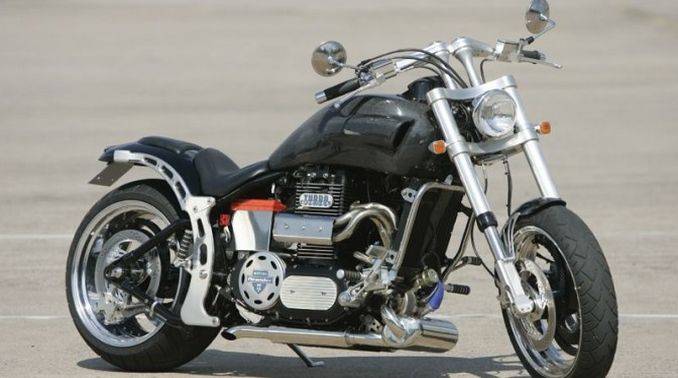This post was first published on 25th August, 2014.
Owing to the ever increasing gas prices, fuel efficiency offered by vehicles has become a strong deciding factor among buyers. Diesel bikes are a great benefit for people obsessed with fuel efficiency but unfortunately diesel bikes are currently not offered by any OEMs for the masses. Royal Enfield’s Taurus was the only diesel motorcycle that was in mass production until some time ago. The vibration produced by diesel engines in a motorcycle, jolts the rider and makes travel tiresome, and eventually the user may even start feeling the strain through pain in his/her elbow joints. Hence, vibration is a concern among diesel engine manufacturers.
Neander Motors from Germany launched the world’s first Turbocharged Diesel Engine Motorcycle some time ago. This engine works on the principle in which pistons act on two opposing crankshafts via two connecting rods, resulting in almost vibration-free running. The patents/patent applications behind the engine give us an insight into the technology behind their vibration-free diesel engine.
The patent application WO2005038197A1 entitled Reciprocating Piston Internal Combustion Engine talks about an internal combustion engine with two cylinders that are arranged in series. Inside these cylinders, respective lifting pistons reciprocate. The engine also has two parallel crankshafts, two connecting rods associated with every lifting piston in a manner that the first connecting rod is swiveled to the lifting piston with its first end and is rotationally received on a crank pin of the first crankshaft with its second end. Similarly, the second connecting rod to the second end. The crank pins of the respective crankshaft have a common axis that runs parallel to the axis of rotation of the associated crankshaft.
The image gives us a better understanding of the engine. Unlike conventional engines, the proposed engine includes two parallel crankshafts that rotate in opposite directions through geared teeth provided in the crankshafts. Further, each piston, on both the ends, is connected to twin crankshafts through two connecting rods. The counter rotating twin crankshafts cancel the majority of the vibration produced by the engine by compensating rotating inertial forces and all 1st order oscillating forces.
Neander motors also hold a patent application for a single cylinder engine having the same counter rotating twin crankshafts design, Reciprocating Piston Internal Combustion Engine (WO2006117060A1).
Other innovative features present in the motorcycle are:
- Turbocharger with intercooler that kicks in additional power providing tremendous acceleration (US20140041385A1) Reciprocating Internal Combustion Engine Having at Least One Piston
- Twin telescopic fork has a pair of telescopic tubes on either side for better suspension (WO2005051754A1) Telescopic fork for steerable front wheels of vehicles
- Pistons for receiving two connecting rods (US8360028B2) Piston with two pivot bearings and twin crankshaft piston engine
- Connecting rods for suiting the twin crankshaft (US20070137422A1) Connecting rod for piston engine,(DE102005055433B3) Connecting rod for especially double crankshaft piston machine has at least one of two side flange pairs formed so that flanges are provided in front of or behind connecting rod middle plane
- Torsion resistant tubular frame
- Aluminium wheels
- Final belt drive for power transmission to wheels
Neander Motors have applied the same twin counter rotating crankshaft concept for air compressors and their diesel engine is not limited to motorcycles and can be used in ATV’s, water crafts and cars. Neander Motors claims that their diesel engine is 35% fuel efficient over gasoline engines and 10% fuel efficient over multi-cylinder diesel engines and offers greater driving comfort.



